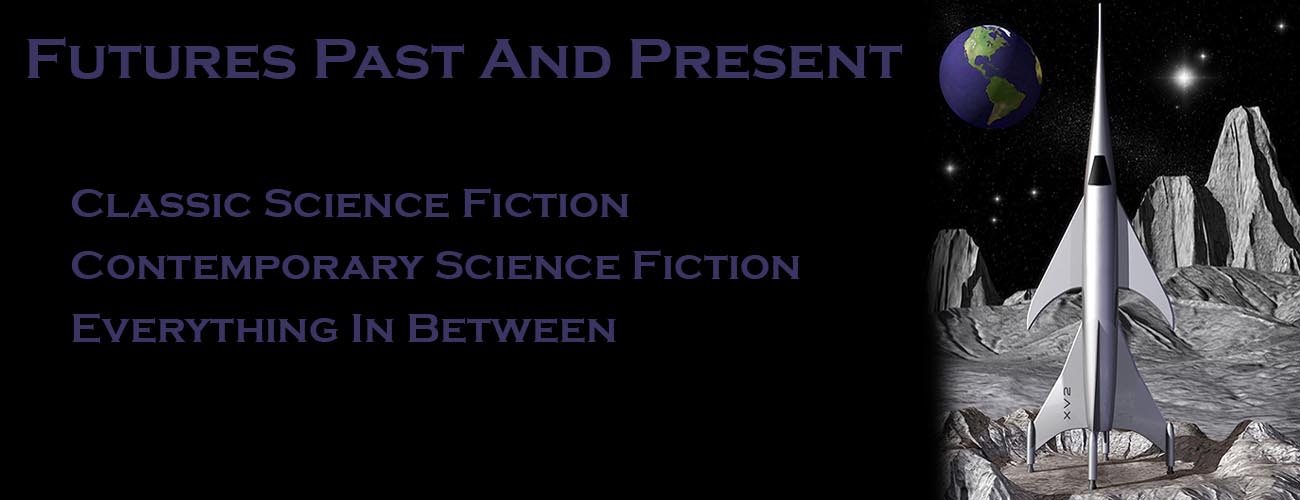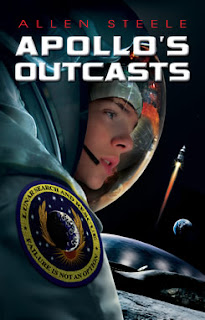iD
Madelaine Ashby
Angry Robot Books
UK Print
Date: 4th July 2013
ISBN: 9780857663108
Format: Medium (B-Format) Paperback
R.R.P.: £8.99
US/CAN Print
Date: 25th June 2013
ISBN: 9780857663115
Format: Large (Trade) Paperback
R.R.P.: US$14.99 CAN$16.99
Ebook
Date: 25th June 2013
ISBN: 9780857663122
Format: Epub & Mobi
R.R.P.: £5.49 / US$6.99
I reviewed the initial novel in this series, vN, last year and was quite impressed by it. It held my interest when I wasn’t able to read it for days at a time. As a result, I was looking forward to the sequel.
Unfortunately (for me, at least), the sequel didn’t live up to its predecessor. Part of that is because the viewpoint character in this one is Javier rather than Amy. Javier doesn’t interest me as much as Amy and her grandmother Portia do. Portia isn’t dead, BTW.
The setup is basically this. Amy and Javier have built an artificial island in the middle of the ocean. After repelling an attack by unknown assailants, they’re visited by a human representative of the church that created them. (Recall that the androids were originally created by a sect so that those not raptured will have companions.) The guy arrives on a supply boat which was forced to transport him to the island to allegedly investigate the raid.
This is where my suspension of disbelief begins to break down. Amy and Javier don’t trust him, but they let him have free reign of the island. Some of this is intentional, and some isn’t. The guy deliberately puts himself in danger by going into a restricted area. Why he wasn’t restricted to the boat he came on, I don’t know. It’s obvious no one wants him there.
He also rapes Javier and forces him to do something that destroys the island. The rest of the book is about how Javier tries to reverse the damage he’s done. Javier travels about blowjobbing doing whatever he feels he has to in order to accomplish his objectives.
SPOILER ALERT:
Where the story really went off the rails for me was in the final confrontation. Having found some of his children, Javier discovers that his daughter, whom he’s never met, thinks highly of the man who started the whole chain of events (He’s caring for two of Javier’s children.) and despises him. Yet in just a few sentences Javier is able to completely switch her allegiance.
Also, androids have a built-in failsafe mechanism that causes them to shut down whenever a human is threatened or hurt. A big deal is made of this throughout the book. It’s the failsafe mechanism that allows Javier to be manipulated initially. I found Javier’s rationalization around the failsafe in the final confrontation a little too convenient.
END SPOILER
On the positive side, Ashby’s writing, which was quite good to begin with, has improved. The story moves along smoothly and quickly. The pacing is superb. The dialogue reads like people talking, not words put in characters’ mouths by an author. The flashback scenes of Javier’s childhood were handled well and didn’t detract from the story.
This book won’t be for everyone. vN was from the point of a four year old. As such, there wasn’t a lot of sex, and no graphic sex, in the book, although the violent content was high. iD is very different. There’s plenty of graphic content, both sex and violence, with more of the former than the latter. (Or maybe I’m just desensitized to violence.) If you’re easily offended, or if you’re squeamish, you might want to give this one a pass. Of course, everyone’s tastes are different, and your mileage may vary.
One thing that did intrigue me were the hints Ashby dropped about generation ships and space travel. There’s clearly a war between vN and humans coming. I’m wondering if the solution is going to be the vN leaving Earth. We’ll have to wait for the sequel to find out.
I’d like to thank Angry Robot Books for the review copy.







